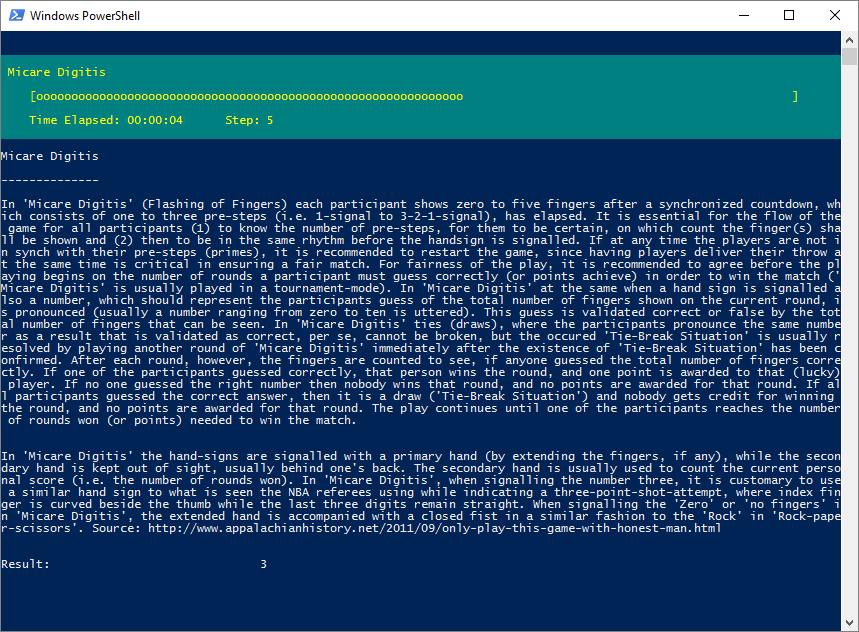| OS: | Windows | ||||||||||||||||
| Type: | A Windows PowerShell script | ||||||||||||||||
| Language: | Windows PowerShell | ||||||||||||||||
| Description: |
The regular action in the Rock-Paper-Scissors is to play the 'Rock-paper-scissors' -game (or 'Stone-paper-scissors' -game). The result of a round of 'Rock-paper-scissors' is displayed in console after the user settable amount of delay (defined in milliseconds with the parameter To play a round of the Chinese game called 手勢令 (Shoushiling), a parameter To see the the rules of a game, a parameter |
||||||||||||||||
| Homepage: | https://github.com/auberginehill/rock-paper-scissors
Short URL: http://tinyurl.com/jeapk3x |
||||||||||||||||
| Version: | 1.0 | ||||||||||||||||
| Sources: |
|
||||||||||||||||
| Downloads: | For instance Rock-Paper-Scissors.ps1. Or everything as a .zip-file. |
| 📐 |
|
|||||||||||||||||||||||||||
|---|---|---|---|---|---|---|---|---|---|---|---|---|---|---|---|---|---|---|---|---|---|---|---|---|---|---|---|---|
|
| ➡️ |
|
|---|
|
|||||||||||||||||||||||||||||||||||||||||||||||||||||||||||||||||||||||||||||||||||||||||||||||||||||||||||||||||||||||||||||||||||||
|
| 📝 |
|---|
